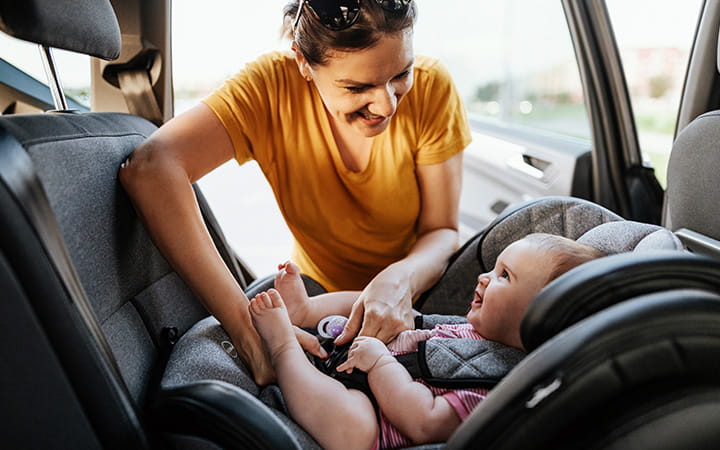Internet Buyers Beware: Counterfeit Child Car Seats Are Flourishing
May 25, 2021
 University Hospitals Rainbow Babies & Children'sExperts in Children's Health
University Hospitals Rainbow Babies & Children'sExperts in Children's Health

If you’re shopping online for a child car seat, beware of knockoffs that fail to meet federal safety standards.
Counterfeit car seats have flooded the market in recent years, putting children at greater risk of injury in a vehicle crash.
Choosing and installing a car seat is one of the most important parts of getting ready for your new baby, and an important part of your baby’s transition from infant to toddler and from toddler to preschooler. That is because motor vehicle crashes are the leading cause of death and injury for children older than age 1.
Over the past year, child passenger safety experts at UH Rainbow have come across four seats that don’t meet crash safety standards and would not protect children from injury in a vehicle crash.
These seats typically are sold online and parents didn’t realize the seats are counterfeit until the Rainbow safety team flagged them.
Some parents unwittingly buy a counterfeit car seat, lured by a bargain price. Others, unfortunately, think they are getting a popular or expensive brand and pay a high price for a counterfeit.
Identifying fakes isn’t always easy. Many look like the real thing. But there are some clues to look for, says Chrystal Gullett, program coordinator of the Injury Prevention Center at UH Rainbow.
Check the Straps
One telltale sign of a counterfeit is the straps that hold your child in the seat, Gullett says.
Certified, safety-tested car seats have wide straps and five-point harnesses for the shoulders, hips and between the legs.
Fakes commonly have narrow straps like those on high chairs and strollers and they have three-point harnesses.
“On a real car seat, you can see how wide the harnesses are,” Gullett says. “Narrow harnesses are one of the first things we noticed when we saw the fakes.”
Look for the Labels
Labels can be a major clue as to whether your car seat is counterfeit, Gullett says. Counterfeit car seats typically do not have the warning and informational labels that appear on approved car seats.
Looking at the label is especially important when buying from third-party vendors or distributors, according to the non-profit Consumer Reports.
Label information to look for:
- Labels must indicate the seat meets Federal Motor Vehicle Safety Standard 213, which regulates child seats.
- Labels also should include installation and use instructions, the manufacturer’s name and contact information, model number and date of manufacture.
- Other information on the label should include weight and size guidelines and an air bag warning on rear-facing child seats
"On the counterfeit car seats, there is no information like that," Gullett says.
What To Do If You’ve Bought a Counterfeit Seat
If you find that you’ve bought one of these cars seats, you should stop using it and buy another one, Gullett says. Keep in mind that a child car seat does not have to be expensive to be safe, she says.
Buying from a major U.S. retailer or established seller of child products increases your chances of getting a certified seat, she says.
The American Academy of Pediatrics publishes a list of car seats that meet federal safety standards.
Related Links
The experts at UH Rainbow Babies & Children’s Hospital are nationally certified child passenger safety technicians who can help you work through any issue or question related to keeping kids safe in motor vehicles. Learn more about how best to protect your little traveler or call to get free help with installing a car seat.
Tags: Child Safety


